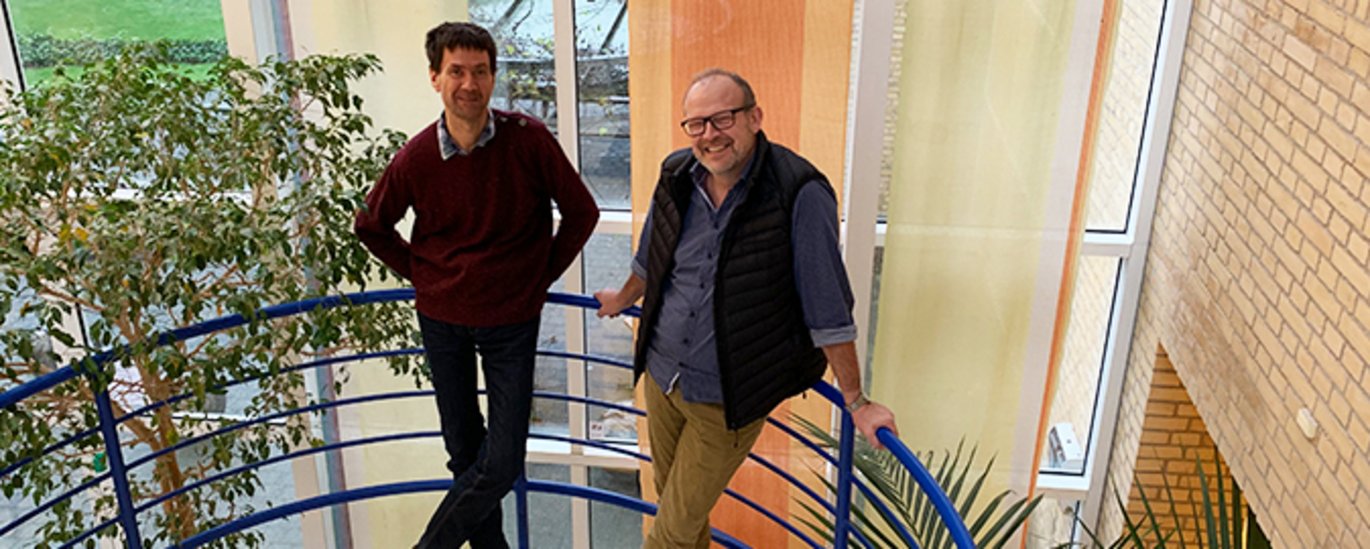Aarhus University participates in a new Oresund-Kattegat-Skagerak EU Life Science Network
Gregers Rom Andersen and Poul Nissen from the Department of Molecular Biology and Genetics, Aarhus University, participate in a new three-year EU project for the Oresund-Kattegat-Skagerak (OKS) area, which has received a grant from the EU of EUR 3.6 million.

The project entitled HALOS (Hanseatic League of Science) will build a unique collaboration between Hamburg and South-West Scandinavia, bring together the four unique research facilities MAX IV, ESS, DESY and European XFEL, and create a centre for integrated world-leading Life Science innovation and research.
The HALOS collaboration includes eight academic research institutes in Sweden, Denmark, Norway and Germany, MAX IV and ESS in Sweden, DESY and the European XFEL in Germany, the Medicon Valley Alliance (MVA), industry in MedTech, BioTech and Pharma, Region Skåne, the Capital Region of Denmark and the City of Hamburg.
With its direct focus on Life Science, HALOS has a unique potential for achieving synergies in both research and between the European research facilities MAX IV, ESS, DESY and European XFEL, creating a Life Science centre that can become one of the world's leading.
HALOS includes a regional development project, where overall mapping, analyses and seminars with key players will result in common key messages and strategies. The focus is on innovation and so-called 'tech transfer', researcher mobility and linking business more closely with research facilities.
The extensive collaboration will also play a key role in promoting knowledge in the private sector and creating networks between the private sector and researchers. Ideas from companies will also be highlighted and incorporated in different forums to create opportunities for collaboration on major societal challenges.
The main part of the project will build expertise on using FEL light, synchrotron light, neutrons and electron applications in Life Science. This research subproject will contain 41 six-month projects according to a model tested, with very good results, in the previous Interreg project ESS & MAX IV: Cross Border Science and Society. In HALOS, the model is developed further to include additional technologies, link more closely with business and specifically focus on the Life Science area.
From Aarhus University, Professor Gregers Rom Andersen and Professor Poul Nissen participate in HALOS.
"HALOS is a perfect follow-up on the previous project, where we were very active in the use of X-rays and neutrons from international facilities in Life Science research. But with HALOS, we get the opportunity to train our students and postdocs in electron microscopy, which is currently undergoing revolutionary development," explains Gregers Rom Andersen. "It is also a clear improvement that we now have the big facilities DESY and XFEL in Hamburg, as they are actually located even closer to us than MAX IV and ESS in Lund."
For further information, please contact
Professor Gregers Rom Andersen
Department of Molecular Biology and Genetics
Aarhus University, Denmark
gra@mbg.au.dk - +45 3025 6646
Professor Poul Nissen
Department of Molecular Biology and Genetics
Aarhus University, Denmark
pn@mbg.au.dk - +45 2899 2295
About HALOS
HALOS is scheduled to run over three years starting on 1 February 2019 with a budget of EUR 3,568,550 (50% EU funding and 50% co-financing).
Partners
Denmark
- Aarhus University: Gregers Rom Andersen and Poul Nissen
- University of Copenhagen: Michael Gajhede
- Technical University of Denmark: Anders Bjorholm Dahl
- Capital Region of Denmark Hovedstaden: Jakob Øster
Sweden
- Lund University, Kajsa M. Paulsson og Erik Renström
- Malmö University: Marité Cardenas
- Region Skåne: Eskil Mårtensson
Germany
- Universität Hamburg: Arwen Pearson
- City of Hamburg: Klaus von Lepel
- EMBL (European Molecular Biology Organization): Matthias Wilmanns
Denmark-Sweden
- Medicon Valley Alliance: Petter Hartman
Norway (associated)
- Oslo University: Reidar Lund
North European common research facilities
- MAX IV: Marjolein Thunissen
- ESS: Esko Oksanen
- DESY (Deutsches Elektronen-Synchrotron): Oliver Seeck
- European XFEL, Kristina Lorenzen
